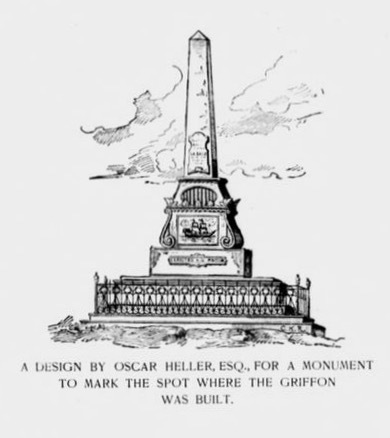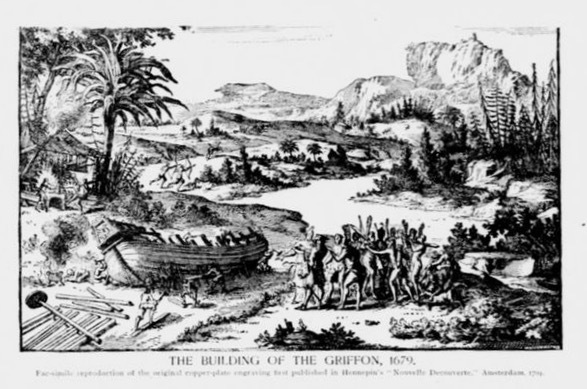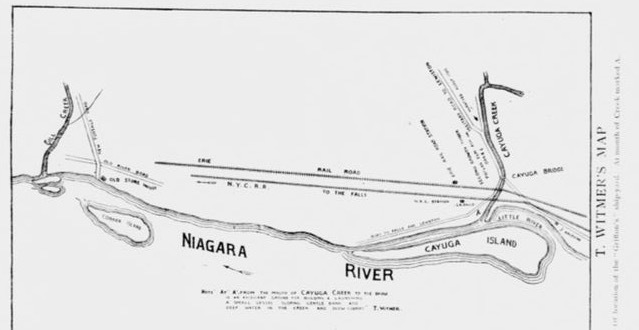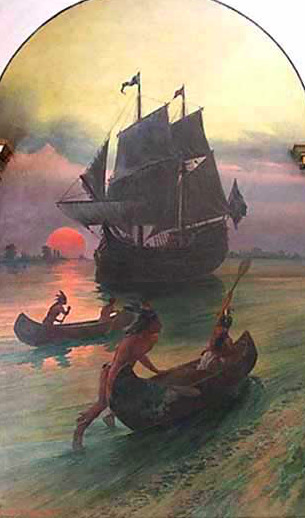The Griffon
The Griffon was built near the mouth of Cayuga Creek on Cayuga Island which is on the Niagara River, five miles above the Falls on the American side. It was built by René-Robert Cavelier Sieur de La Salle in 1678-79. The building of the ship was hampered by problems such as bad weather, the sinking of the supply ship, a mutinous crew and uneasy relations with First Nations people. This barque, which weighed between 45 to 60 tons and was fitted with a cannon, set sail on August 17, 1679 with La Salle, Father Louis Hennepin and a crew of 32 onboard. This was the first vessel to sail the Upper Great Lakes other than canoes.
The ship went from the Niagara River which took a great deal of effort and manpower, around Long Point, Ontario and across Lake Erie to the mouth of the Detroit River. They went to Lake St. Clair which La Salle named after St. Clare of Assisi because they sighted the island on the feast day of St. Clare. The ship then went on to lower Lake Huron and Saginaw Bay Harbour. They had collected a large cargo of furs which La Salle planned to carry to Niagara. On September 18, 1679, the ship sailed east. It is said to have disappeared in Green Bay with a crew of six men. Neither La Salle nor Hennepin were on board the ship when it disappeared. La Salle thought that perhaps his men had stolen the furs and scuttled the ship. Hennepin surmised that the ship had been lost during a storm at sea.
This is an incredibly sought-after wreck. It is sometimes called "the ghost ship of the Great Lakes". Displays at Mississagi, Gore Bay and Old Mill Heritage Centre claim to have artifacts from the Griffon. Some groups believe that they have found the wreck, but nobody has given enough evidence to support their claims.



